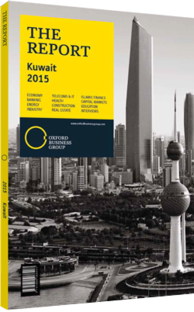Kuwait lays out project agenda with state development plan
After setting out a broad outline of the country’s second five-year development plan in August 2014, the government approved the KD34.15bn ($117.65bn) strategy in February 2015. The announcement builds on a successful year of project implementation in 2014 and emphasises a commitment from the authorities to maintain capital investment, despite the plunge in oil prices. Moreover, it provides a welcome boost for the country’s growing private sector.
SPECIFICS: The Kuwait Development Plan (KDP) 2015-20 puts into motion the government’s broad goal of transforming the country into a regional trade and financial hub by 2035. The plan is a two-pronged strategy to push through major economic reforms to empower the private sector and to implement a significant pipeline of ambitious projects over a five-year period. The KDP was initially drafted with a $155bn budget for key developments and will focus on more than 500 projects to build core infrastructure, utilities and housing across Kuwait, and to expand the country’s vital oil and gas sector. The government has acknowledged that the National Development Plan (NDP) 2010-14 was not successfully implemented, hence a large number of projects from the previous plan have been included under the new strategy. According to the new plan pulls 421 projects from the previous plan and identifies 92 new projects that will be implemented within the next five years.
PARTNERSHIP: A major aspect of the plan is the creation of public-private partnerships (PPPs) to carry out projects worth an estimated KD8bn ($27.56bn), according to international consultancy Ventures Onsite. The groundwork for this goal has already been laid with the introduction of the new PPP Law in 2014.
One of the biggest projects under the new development plan is a $20bn metro rail network. According to the Ministry of Communications, the government has started making progress on the project. The Partnerships Technical Bureau (PTB), which was established under the first development plan to serve as the main body responsible for PPP project implementation, has prepared the feasibility study and finalised the layout of the network, which will include 61 stations and the laying down almost 70 km of track. Construction is expected to begin in 2017. Other key infrastructure project is the proposed KD8bn ($27.56bn) rail network that will link Kuwait with its GCC partners through the GCC rail network (see Transport chapter). According to the PTB, the Kuwait National Rail Road will eventually serve as an integrated rail network with 511 km of track. The PTB plans to undertake the project as a PPP under a build, operate and transfer contract.
OTHER DEVELOPMENTS: Mubarak Al Kabeer Port on Boubyan Island is another major infrastructure project that will be financed and built under the KDP, while other key projects include: the development of Madeenat Al Hareer, commonly known as Silk City; the creation of tourist attractions at Failaka Island, which is located 20 km from the coast; and the expansion of sewage and solid waste treatment facilities throughout the country. The KDP also includes funding to expand capacity at Kuwait International Airport, as upgrades have been delayed several times over the last several years. Oil and gas is also set to receive investment under the KDP. For example, Kuwait National Petroleum Company has indicated that it will invest up to $35bn on expanding oil and gas projects over the next five years.
LOOKING AHEAD: While the KDP is an important strategy for the country’s future growth trajectory, the issues that delayed the previous plan will need to be avoided. The PPP strategy, for example, was identified under the first NDP but the country was unable to lift any PPP projects off the ground until January 2014.
According to Arabian Business, the 2011-14 plan made minimal progress in other areas too, implementing less than 57% of the allocated budget. However, the fact that the majority of this funding was implemented in 2014 is a positive indicator that the government has addressed the necessary political issues and can build on the positive momentum going forward.
You have reached the limit of premium articles you can view for free.
Choose from the options below to purchase print or digital editions of our Reports. You can also purchase a website subscription giving you unlimited access to all of our Reports online for 12 months.
If you have already purchased this Report or have a website subscription, please login to continue.

